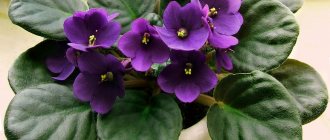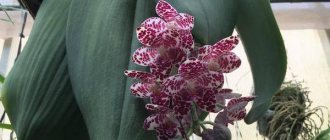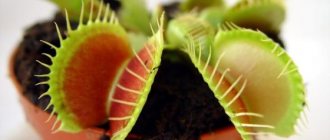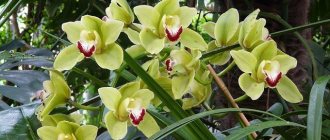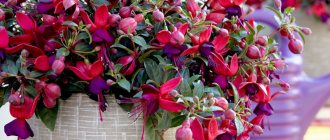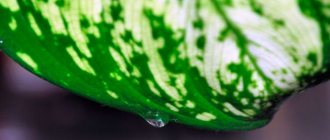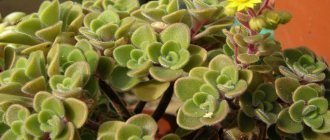The indoor violet has rightfully conquered many window sills, greenhouses and greenhouses . This small flower captivates with its compactness, aesthetics and beautiful flowering.
But still, most people mistakenly call them violets, because they have almost nothing in common with the plants that bear this name. The official name is Saintpaulia , in some sources they are still called Uzambara violets.
So what family do violets belong to? What is the difference from Saintpaulias and how to distinguish them?
To eliminate mistakes, we will below provide a brief description of violets: interesting facts, history of origin and superstitions about these indoor plants, photos of various varieties.
All about violets
Natural habitat
The ancestors of modern indoor pets grow in Africa. The massifs of the Ulugur and Usambara (Usambara) mountains are the natural habitat of Saintpaulia , most varieties are located on the slopes of the latter and therefore received a second name, Usambara (Usambara) violet.
Violets in natural conditions.
In East Africa, violets grow in humid climates, often near waterfalls and on river terraces. In such conditions there is a lot of water dust and fog, and the soil is light and well permeable to moisture and air.
Origin story
The description of indoor plants should begin with the history of their occurrence in nature.
Walter von Saint-Paul , Commandant of the Uzambara District of German East Africa – German Colony. In 1892, while studying the flora and fauna of the territories subordinate to him, he discovered flowers in the mountains and collected seeds to understand what kind of plant it was.
They were then sent to his father, who was the president of the German Dendrological Society, Ulrich von Saint-Paul, and this is how they ended up with Hermann Wendland.
The scientist named the cultivated plant grown in 1893 Saintpaulia , and the name was given to the addition violet flower for the shape of the flower. This species was separated into a separate genus, named after the father and son who discovered it.
Next, the flower was presented at an exhibition in Goethe, where the rights to breed on a production scale were purchased by the Benari company.
Violets were brought to the USA in 1927 , and there they were recognized as ideal indoor plants. From that moment on, the mass production of new varieties began and by 1949 there were already 100 of them, and today their number is more than 32 thousand.
Important! More than 2000 varieties have been bred by domestic breeders.
Biological classification
So, what is a violet from a biological point of view - is it an herbaceous plant or not? Saintpaulias are classified as a separate genus - they are evergreen herbaceous plants of the Gesneriaceae family.
The structure of an indoor violet is as follows:
- the stem is shortened, which leads to the formation of a rosette of leaves;
- the leaves are respectively arranged in rows and very close to each other;
- the leaves on the stem are round in shape, fleshy and leathery, covered with villi;
- the base of the leaves is usually slightly heart-shaped, and the apex is rounded or slightly pointed;
- The color of the leaves varies from dark to light green; they are also variegated and spotted, sometimes almost white.
Next, is the violet a monocot or a dicotyledon? The houseplant violet is bipolar . Flowers collected in racemes usually have five petals, several stamens and one pistil. The calyx consists of five sepals located on the receptacle. The violet flower pattern is shown in the picture below.
The structure of a violet flower.
After pollination, a seed capsule is formed. The seeds themselves are very small and have average germination capacity, which is lost over time.
Based on this information, you can create a passport for a houseplant:
- plant biology passport: Kingdom: plants;
- Department: flowering;
- Class: double-field;
- Order: clear-flowered;
- Family: Gesneriaceae;
- Genus: Saintpaulia;
- Application: indoor plants;
- Natural area: mountainous areas of eastern Africa.
- simplified violet plant passport for kindergarten: Kingdom: plants;
- Department: flowering;
- Genus: Saintpaulia;
- Use: indoor plants.
Structure
Saintpaulia has a completely recognizable appearance. It cannot be confused with another indoor plant. The size is small, elastic leaves tightly cover the pot. The buds of the plant are small, growing above the leaf blade.
Saintpaulia has a tap root system. The roots are thin and easily damaged by careless manipulation. Flower growers should be aware that the root system of the plant develops quickly and deprives the soil of useful components. It is for this reason that Saintpaulia must be replanted annually. In addition to the root system, the parts of the violet plant include the stem, shoot, and flower.
Stem structure
The structure of the violet stem is unique. The plant is characterized by a low stem with a lush rosette of leaves in the root area. The leaf blades are rich green in color with abundant pubescence on the surface. They are quite wide and shaped like hearts. The edges of the leaf blade may be wavy. It is noteworthy that the shade of the leaf depends on gender. The structure of the violet leaf is characterized by the presence of short petioles and stipules.
Escape structure
The structure of the violet shoot does not have any special features. There are one to several flowers on the shoot. In addition to flowers, the peduncle has bracts. The process of reproduction directly depends on them. The more developed they are, the more suitable this peduncle is for reproduction.
Flower structure
The structure of a violet flower is classic: petals, pistil and stamens. In this case, the petals play a more decorative role. In natural wild conditions, they attract large numbers of insects for the pollination procedure. The pistil and stamens are involved in the fertilization process during breeding work. In turn, stamens have anthers and filaments.
Energy influence and superstitions
A description of indoor violets will be incomplete without mentioning their energy component. Violets are very sensitive not only to drafts from the window, but also to bad energy in the house.
In homes where there is a lot of arguing and family members suffer from mood swings and depression, violets usually bloom poorly and tend to disappear.
Attention! The zodiac sign that violet corresponds to is Taurus. Like this sign, Saintpaulias symbolize harmony, stability and tranquility.
Violet brings peace and harmony to the house, cleanses the space of negativity . By bringing wealth into the home, it improves health and extends life expectancy.
The energy of plants depends partly on their color:
- white - purity, femininity, peace, tranquility, liberation from oppression.
This color is suitable for calming, both for people in a state of aggression and for those who are emotionally very sensitive. Dulling the feeling of anger, worries and fears, communication with a white violet brings peace. It is recommended to place white violets in rooms where children live, especially if quarrels often arise between them; - red of all shades - cleanse the house of negative energy, treat depression, and help pessimists. A person who has a violet of these colors in his house begins to have a more positive attitude towards his life;
- blue and blue - personify the unification of the earthly and airy, awakens creative abilities. They are often placed in the rooms of children who are trying to teach art - music, singing, drawing. Blue color also reduces appetite, and it is useful to place them in the kitchen if you want to lose weight;
- purple - helps mutual understanding, comprehension of the spiritual, wise, as well as for meditation and reading the future. They are hosted by teachers, writers, psychologists, philosophers and thinkers.
Violet
This family includes mainly herbaceous perennials and annuals, as well as subshrubs and shrubs, standing and climbing plants.
There are twenty over eight hundred violet species in total, divided into twenty-eight genera. Herbs grow in the temperate zone, while shrubs and shrubs grow closer to the tropical zone. The violet leaves are bare, the upper ones are almost sessile, elongated, with stipules, the lower ones have a broadly ovate shape and long petioles. The leaf arrangement is usually alternate, sometimes biserial and very rarely opposite.
The flowers are either solitary or collected in the axils or at the ends of the shoots in panicles or racemes. Large flowers can be open or closed. In some species, the petals on a flower may have different colors and colors. Flowering usually lasts from mid-spring to autumn, and the fruits - oblong boxes, nuts or berries - begin to ripen from the beginning of summer.
It must be said that the shrub species of violets found in the Chilean Andes are so unusual that they do not at all resemble those violets that grow in our latitudes.
The most famous representatives of the Violet family can be called the amazing violet, dog violet, fragrant violet, white violet, field violet and many more species of this plant, as well as their varieties and hybrids.
Viola: growing from seeds, planting and care
Author: Marina Chaika February 20, 2022 Garden plants
plant (Latin Viola) belongs to the genus of the Violet family, representatives of which grow mainly in mountainous regions and places with a temperate climate in the Northern Hemisphere and, according to various sources, number from four hundred to seven hundred species. Some of the violas are endemic to the South American Andes, and a number of them are found in the subtropics of Brazil, the tropics of South Africa, Australia, the Sandwich Islands and New Zealand. Viola is popularly known as pansy .
The violet viola has been popular since time immemorial - about two and a half millennia ago, the ancient peoples inhabiting the territory of Europe wove the flower into festive garlands and wreaths, decorating the premises for celebrations with them. The fragrant violet was the first to be introduced into culture, followed by the mountain violet. The first mention of breeding work on violet hybrids dates back to 1683. Europeans became acquainted with the Wittrock viola species, which is a hybrid of yellow viola, Altai viola and tricolor viola, in the 19th century. Today, garden viola is one of the most popular plants, with hundreds of varieties and varieties.
Life cycles
When buying a little baby, you always wonder how long such flowers grow. Violets grow quite quickly, from a small baby to an adult blooming violet in just six months to a year, depending on the variety.
It takes no more than a year from cutting to adult plant.
Violets are propagated by leaves, shoots and peduncles. Children from stepchildren bloom the fastest, and later than all from peduncles.
The stages of violet growth can be divided:
- A cutting from a leaf or peduncle (leaves are taken from the second or third row and rooted in a convenient way);
- A baby from a cutting or a stepson (children are separated from the cuttings when they reach a height that allows them to exist independently; stepchildren are separated from the mother at approximately the same size, preferably with several roots);
- Starter or teenager (a violet that is ready to bloom, and often is already blooming, but has not yet reached its adult height);
- Adult.
Shoots or stepsons are formed in the axils of the leaves. They grow quite quickly and when they reach the size of a large baby, they are removed.
Important! Knowing how violets grow in nature, growing them at home will not cause much difficulty.
Care
To get beautiful and healthy Saintpaulias, you need to take care of them. Lighting, temperature, location of the flower, and appropriate care are important. Let's consider the basic rules for growing violets, the observance of which will allow you to achieve the desired result.
- Violets need light, but despite this, it is better to isolate them from direct sunlight.
- It is bad for the flower when the leaves come into contact with the glass.
- Violets love moisture, but you should not water them with cold water, or get them on the leaves when watering. You need to water regularly, as the soil dries, but you should not overwater the violet.
- It is necessary to promptly remove dried flowers and damaged leaves.
- Violets are afraid of temperature changes and cold.
- Fertilizing is carried out once every two weeks using mineral fertilizers (10 g per 3 liters of water). Plants especially love nitrogen. Its deficiency can lead to poor growth and lack of flowers.
- When replanting a plant, it is necessary to make drainage from perlite, moss, and expanded clay balls.
- The lower leaves should be left slightly above the soil. A rosette is placed at ground level. Wrong choice of depth leads to poor flower growth.
Some gardeners propagate violets using leaves. To do this, you need to take a few leaves from an adult violet and place them in a container of water. Choose small jars made of dark glass so that the light does not shine directly on the cut, but the container is transparent. The stalk must be long. The cutting is cut diagonally. Change the water regularly.
In about a month, roots will appear. After they appear, plant the cuttings in the ground. A new rosette of leaves is formed. If you are planting several sprouts in one container, do not miss the moment of picking
It is important that the plant gets stronger. This method is faster than propagation from seeds, but the plant may turn out weaker and wilder
Propagating violets is a wonderful hobby. Find one of the many varieties to suit your taste and get a real flower garden that will delight you every day. Despite some subtleties of care, violet is not a very fastidious plant, so even a novice gardener has a chance of successfully breeding these flowers.
Features of the plant and interesting facts about violet
Violets are very delicate, fragile and at the same time they are resistant to various irritants and changes in conditions. Saintpaulias tolerate shortcomings of care well if they are not neglected critically.
Interestingly, there are two legends about the appearance of violets on the slopes of the African mountains:
- the first legend talks about Adam's tears, which turned into Saintpaulia flowers;
- the second version is Greek - Zeus, the supreme god of Olympus, turned a nymph running away from Apollo and asking for protection into this flower.
They also believe that violets should not be placed in the house of unmarried women , because they drive men away from the house. But this sign accompanies many colors, most often without reason.
Basic care elements
Some varieties of violets, especially large-flowered ones, take a long time to germinate. The timing of the appearance of the first sprouts can exceed 1 month
If seeds are bought in a store, then you should pay special attention to this feature. Without waiting for the shoots to sprout, the grower mistakenly disposes of the material
To prevent seedlings from being exposed to blackleg disease, they must be ventilated and not flooded. The soil should be moist, but not watery. If a grower accidentally “nailed” a sprout to the ground with water, then it must be urgently lifted with a toothpick or a needle. A weak plant will not be able to straighten up and will die.
Ventilate seedlings to avoid rotting.
The viola bush requires space to grow and develop, so in the two-leaf phase the seedlings are planted in separate containers. If violets are used for flowerpots or balcony boxes, then the seedlings are planted directly in them, maintaining the recommended distance between plants.
Important! When transplanting plants, they are buried down to the first leaves.
All types and varieties of violets respond very well to fertilizers.
Viola feeding time:
- young shoots are sprayed with a solution of a growth stimulator;
- weekly fertilizing includes watering with diluted mineral fertilizers at the root;
- After planting in the ground, flowers need monthly complex fertilizer.
Garden violets do not tolerate fresh manure and droppings as fertilizer. It causes burns and death of the bush. It is best to use autumn humus, leaves and special fertilizers for flowering plants.
How to use
Tincture and decoction are most often used as a means to treat diseases. Compresses also help alleviate the condition for a number of diseases.
The plant is collected independently during the flowering period or purchased ready-made raw materials at the pharmacy. On sale are dry crushed herbs and bagged tea, which you just need to brew.
cough remedy
Violet effectively helps with cough, but before use you need to find out its nature. It is impossible to remove inflammation of the upper or lower respiratory tract with decoction alone. For a bacterial infection, you will need to take antibiotics.
A decoction of the plant will help clear the airways of mucus. If the cough is dry, it will relieve a sore throat and soften it.
To prepare the decoction, take 2.5 tbsp. l. dry herbs per 500 ml of water. The mixture is boiled for 10 minutes. Then leave for about an hour and filter. Take 200 ml of the product 2 times a day.
Flu infusion
Medicinal herbs have healing properties that help alleviate the condition of influenza, acute respiratory infections and acute respiratory viral infections. Thanks to the presence of salicylic acid and vitamin C in tricolor violet, it is possible to remove discomfort in the joints, boost immunity and reduce sore throat.
For the infusion, it is enough to take 300 ml of water and 3 g of dry pharmaceutical herb. Pour boiling water over the violet and let it brew for half an hour. Strain the finished infusion through a sieve and take 100 ml orally before meals once a day or use as a gargle.
Tea for diathesis
Tricolor violets have medicinal properties that help cope with diathesis in young children. Before treatment, you should definitely visit a pediatrician to make sure that the use of the infusion will not harm the growing body.
Pansies are classified as poisonous plants, so they should be used carefully for diathesis, constantly monitoring the child’s condition. The infusion will help relieve itching, remove redness and inflammation.
To prepare the product you will need the following ingredients:
- 0.5 tsp. chopped tricolor violet herb;
- 0.5 tsp. dry string;
- 0.5 tsp. Veronica officinalis;
- 100 ml water.
Mix all herbs. Boil water and pour it into the mixture. Leave for 1 hour. Give the child 1 teaspoon of infusion 3 times a day. In addition, the prepared liquid is used to wipe reddened areas of the skin.
Infusion for rheumatism and gout
The tricolor violet herb has also been used in the treatment of rheumatism and gout. The healing infusion will help relieve the inflammatory process, improve general condition, remove salts and toxins from the body thanks to its diuretic effect.
To prepare the remedy you will need 8 tsp. dry chopped herbs and 1 liter of hot water, pre-boiled. The liquid is poured over the plant and left for half an hour.
The infusion can be taken internally and externally. Drink 200 ml of liquid 3 times a day or moisten sore areas of the skin with it.
The beginning of large-scale selection
The most large-scale selections began after 1930 and they became the basis for the English and German branches of varieties. Of those varieties that bloomed, only the best species were selected and left. And after 1936, Saintpaulias began to be selected and bred not only in Europe, but throughout the world.
History has preserved the dates of breeding of the most important, according to biologists, varieties:
- The first blue terry - 1939;
- The first variety with unusual leaves - 1941;
- Pure pink and white - 1942;
- Terry purple – 1948;
- The first variety is “fantasy”, the number of items is 5000, and the varieties are about 100 – 1949;
The first fantasy varieties appeared only in 1949.
- The first varieties with a bordered flower, the first variety had a white border - 1951;
- The first flowers of the star - 1953;
- A variety with double pink flowers was developed, it was sold for $1000 - 1954;
- The first yellow flower was in 1989.
The first yellow violet "Majesty".
Nowadays, breeders do not stop. Every day more and more new varieties appear. There are already ampelous, variegated, mini, semi-mini and other subspecies of Saintpaulia.
